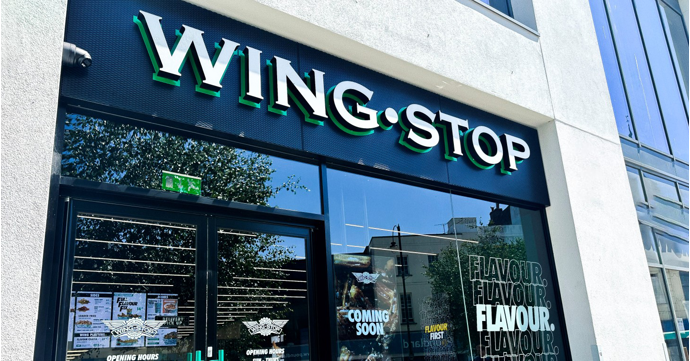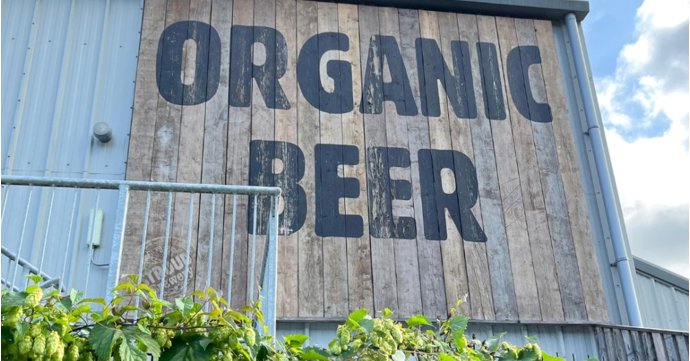Cheltenham structural and civil engineering firms, Davidson Walsh (DW) and O'Brien & Price (OBP) announced their merger in May 2024, after managing director Gary Patefield-Smith took on a 'Help to Grow' course at the Growth Hub in Gloucester.
Initially intending to keep the two businesses completely separate, with Gary overseeing both, a chat with a professional mentor led to him choosing to move the two teams into Davidson Walsh's offices in Cheltenham to create a collaborative and high-performance team of engineering talent.
SoGlos meets with Gary to hear about the journey, the challenges and plans for the future.
Where did your relationship with Davidson Walsh start?
Back in 2002, I was looking for work experience as part of my GlosCAT HND building course and I actually got my start at OBP as a technician for a week. I then joined Davidson Walsh as a technician for a paid summer placement, after which Mark Walsh, founder of Davidson Walsh, took me on permanently and sponsored me through university. Once I'd got my degree I came back to work as a project engineer at Davidson Walsh.
I became a chartered member of the Institution of Structural Engineers (IStructE) in 2011, progressed to director in 2015 and then managing director in February 2021 in the middle of lockdown. So, it's been a real progression throughout the business with the same team.
Mark really looked after me and nurtured my position, putting faith in me as a successor. Shortly after he retired, I was approached on LinkedIn about whether I'd be interested in an acquisition, to which I replied, 'only if it's local and if we have worked together before'. I didn't realise who it was until I'd signed an NDA — I was delighted to discover it was OBP.
Martin Hewitt, managing director at OBP, and I had worked alongside each other on a variety of projects and as leaders of part of the IStructE Western Counties chartered membership exam course. As Martin did not have a succession line within the company, he was seeking an engineer he could trust to take on and look after the company and build on its current success. The takeover was set in motion in October 2023.
Why was merging the right idea for the companies?
Well, with Martin's years of experience and my ideas to drive the business forward, supported by the other engineers and technicians — it's a bit of a dream team!
The team at OBP are equally excellent analytically and technically and have a great range of skills which harmonise with the DW team even though, in some instances, we work in very different sectors. Boths teams are passionate and looking to develop their skills further to both develop themselves and the company’s ability to deliver high-end, multi-million-pound structures while also being able to provide design support for other smaller projects, efficiently and effectively.
It's exciting because we can utilise everyone's individual skills and build on them for the future, for example, one of OBP's staff has experience with detailed 3D structures, so my aim is to provide him and other members of the team with further training in this area so that we crystalise the skill set.
I am able to do all of this because I now have those extra numbers allowing me to invest in the team — I'm personally a huge advocate for self- and professional-development, so it's a natural thing for me to want to do and investing in staff creates a very positive working environment where they can flourish. It’s a very promising time.
Have there been any challenges you've met in the journey to merging?
Making sure that the rationale and benefits behind the move were clearly explained to all staff members was what I was most conscious of in terms of the merger. I wanted to make sure that everyone understood that this is a positive move and the benefits that the merger would bring, including job security.
When I took over in October, I was keen to go to the OBP offices two days a week to get to know the staff, their personalities and personal goals. I wanted to make sure they knew that I wasn't going to come in and change everything, I respect what they do and their skills — I was looking for what skills and systems we could utilise as a wider team. They are likely to have processes that we could utilise collectively to produce a high-quality product and an efficient business — and I'm very open to that.
I was concerned that the change is significant and that it might not be received well. However, the team were thrilled by the news.
Continuing with the prospect of the future, do you have any long-term goals on your radar?
Our main goal is to focus on the development of the team in order to facilitate the growth and longevity of the business.
In terms of where we're going as a company, we are fortunate to have received many positive comments regarding the services that DW and OBP provide. However, while we are very humbled by this, we are very aware of our competition and want to develop the practice to become the go-to engineering consultancy in the region and beyond.
I want to be challenging the likes of the larger consultancies in neighbouring counties and the south west etc, so that's the goal — and to, of course, continue delivering a high-quality service.
Are there any modern technologies that you'd like to implement into the merged business?
So, the big thing that's used quite extensively in some parts of the industry is three-dimensional systems. The construction industry is known for being quite resistant to change, so we ideally need to develop our three-dimensional modelling and drafting systems, such as Revit and BIM to be at the top of our game.
One hot topic at the moment is carbon footprint. As engineers, we are fortunate to be in a position to influence the level of embodied carbon within a structure as we can decide what materials are used, how strong they need to be and how much material is needed to make a structure perform as intended. For instance, in terms of the reuse of buildings, we can carry out structural assessments and say whether a structure is suitable for reuse or whether a new build would have more adaptability improving its cradle to grave capability.
In your words, what makes the freshly merged Davidson Walsh stand out from competitors?
We pride ourselves on the quality of our work and our out-of-the-box thinking. We relish the challenge of more complicated projects and we are always aiming to improve our knowledge, industry experience and technology.
The range of skills and experience that we now have under one roof and the breadth of projects that we work on allows us to be a very dynamic and knowledgeable team which, when combined with the use of new and emerging technologies, allows us to provide exceptional solutions to any engineering project.



















